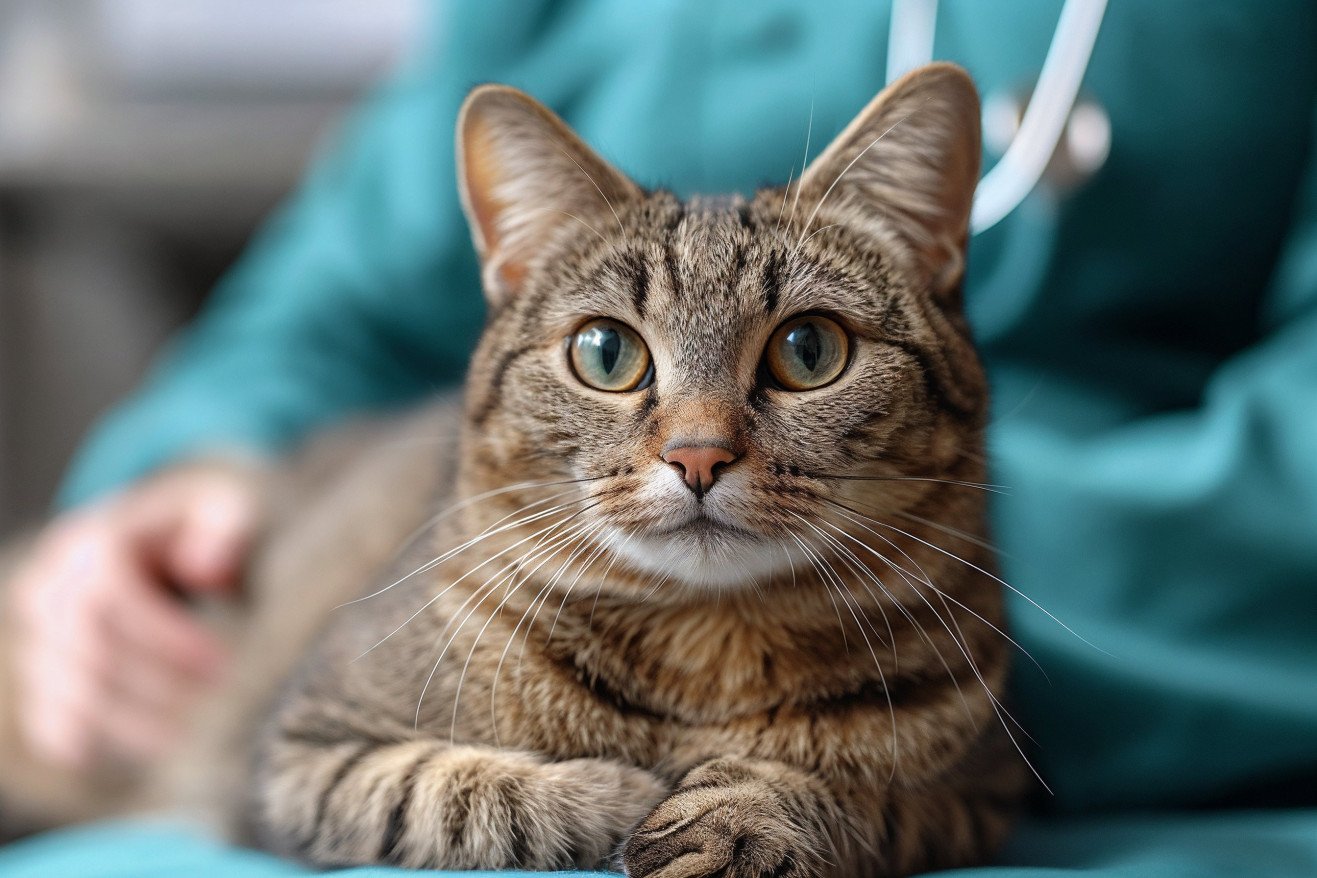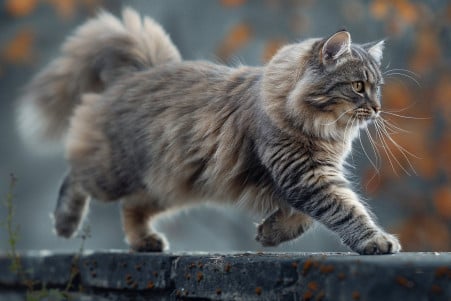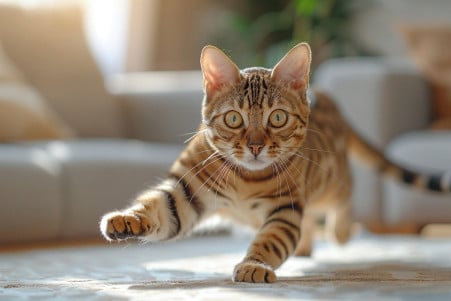Why Would a Cat Lose Its Tail? Reasons and Veterinary Findings
1 February 2024

The sight of a tailless cat can be shocking, but how does it happen? A cat may lose its tail due to traumatic injuries like accidents or fights, illnesses, nerve issues, or congenital disabilities. Cats need to be taken to the vet immediately to avoid pain and other issues. Vets may need to perform surgery, including amputation, to prevent further harm and help the cat heal.
This article will delve into veterinary research, biological studies, and animal behavior science to give a complete picture of the many factors that can lead to tail loss in cats.
You will also find information on potential medical interventions, recovery plans, and the psychological impact on cats after an injury. This well-rounded view is intended to give you the information you need to help cats through these traumatic events and make sure they are healthy and you feel secure.
Why Would a Cat Lose Its Tail?
The Tail’s Physical Function
The tail is a complex part of a cat’s anatomy. It’s made up of the caudal vertebrae, which is an extension of the cat’s spine. Most cats have between 18 to 23 caudal vertebrae, and these are supported by a network of muscles, nerves, and blood vessels.
The Sarcocaudalis muscle is the most important muscle in the tail, and it’s responsible for the tail’s sweeping movements that cats use to communicate. According to A-Z Animals, the vertebrae and musculature of the tail also help cats maintain their balance and agility, which is especially important when they’re jumping or running.
A study published in PubMed explains that the instinctual movements of the tail are important for maintaining a cat’s balance during locomotion. The tail helps cats counteract the sudden shifts that occur when they’re moving, which helps them realign their bodies and avoid falling. This is especially important when cats are hunting, pouncing, or climbing.
In addition, Fussie Cat points out that tail injuries can have a big impact on a cat’s balance and coordination. In the most severe cases, tail injuries can lead to incontinence because the tail’s nerves are responsible for controlling a cat’s ability to urinate and defecate.
In addition to its physical functions, the tail is also a way for cats to express themselves. A tail held high is a sign of confidence and friendliness, while a tail tucked between the legs is a sign of fear or anxiety. This kind of communication is important for a cat’s social life and can be an important indicator of a cat’s mental health.
As a result, the tail is important for a cat’s physical health and emotional well-being, and it’s important for cat owners to understand its function and the impact it can have on a cat when it’s lost.
Where Does Cat Tail Loss Come From?
There are many reasons why a cat might lose its tail, but the most common is trauma. According to Wag Walking, trauma from incidents like getting a tail caught in a door or being hit by a car can cause everything from minor abrasions to complete paralysis.
Fights with other animals are also a common cause, and bite wounds can lead to serious infections and damage. Diseases play a role as well—for example, cancer can lead to tail amputation if it impacts the tail area.
Injuries that cause nerve damage are a leading cause of tail loss, since they impact the nerve endings that go from the spinal cord to the tail and control movement and elimination. According to PetCareRx, while stretched nerves can heal, torn nerves can lead to permanent issues. Birth defects are a less common cause of tail malformation or loss.
Meanwhile, certain accidents, like fan belt injuries that occur when a cat’s tail is caught in a car engine, can lead to extreme trauma, including paralysis. To avoid tail loss, cat owners should keep their pets indoors to protect them from outdoor dangers and make sure their living space is free of anything that could trap their tail.
Diagnosing and Treating Feline Tail Trauma
If your cat’s once-active tail suddenly goes limp, loses mobility, or becomes swollen, these are all signs of tail trauma. According to VCA Animal Hospitals, tail injuries can be as minor as a skin abrasion or as serious as nerve damage. To diagnose the issue, veterinarians will conduct a comprehensive physical exam and may use imaging like X-rays to assess the severity of the tail injury, as Integricare explains.
Treatment for tail trauma can include everything from pain management and antibiotics to more serious interventions like surgery. In some cases, like that of Ooms the cat, who needed a surgeon to repair or amputate his injured tail, as shared by Best Friends Animal Society. After surgery, the cat may be given joint supplements like glucosamine and chondroitin to help with recovery and physical therapy to help rebuild lost muscle mass.
Early intervention is key to preventing complications and determining the best course of treatment. With the right medical care, cats with tail injuries can make a full recovery or adjust to life without a tail, leading to a focus on recovery and a better quality of life.
How to Help Your Cat Recover From Tail Loss
The recovery process for tail amputation involves a mix of physical therapy, environmental accommodations, and supportive care. Physical therapy may involve a veterinarian overseeing controlled exercises to build up the muscles and maintain the flexibility of the remaining part of the tail, according to NDSR. Pet parents can make environmental accommodations by adding ramps or steps to help the cat get to its favorite spots, making it easier for the cat to get around.
Clinical reports from veterinary practices have shown that cats can be incredibly resilient when it comes to adapting to life without a tail. Physical therapy exercises may be prescribed to help the cat regain the sense of balance and coordination that the tail once provided.
Pet parents are essential to their cat’s recovery, as Dr. Guillaume Leblond’s research on tail pull injuries has shown. This includes making sure the cat has a safe and supportive environment, watching for any signs of changes in their cat’s behavior or health, and helping with any prescribed therapeutic exercises.
Over time, many cats will learn to adapt to the loss of their tail, showing incredible resilience. By providing consistent care, pet parents can help their cats live happy, fulfilled lives even after such a major change.
Mind and Mood: The Psychological Impact of Losing a Cat’s Tail
The psychological impact of tail loss can be just as significant as the physical impact. Cats may experience mood changes and other psychological effects as they learn to live without a tail.
For example, tail loss can make feline hyperaesthesia syndrome (FHS), a condition that causes symptoms like tail chasing and tail biting, worse, according to a study published by SAGE Journals. FHS can cause cats to become more sensitive and even engage in self-mutilation, which shows that the psychological effects of tail loss can be quite severe.
In fact, cats often develop compulsive behaviors like over-grooming and excessive vocalization after losing their tails, which suggests that they are experiencing anxiety or stress, according to VCA Animal Hospitals. These behaviors may be a cat’s way of coping with the loss of the tail’s many functions, including its role in balance, communication, and body language.
Cat owners can help their cats through this period of adjustment by playing with them and providing them with a stable, enriched environment that minimizes stress, according to the Cornell University College of Veterinary Medicine.
By being patient and understanding as their cats learn to live without a tail, owners can help their pets learn to communicate and maintain their balance in new ways, which will help them adapt and thrive in their new tailless reality.
Putting It All Together: The Many Causes and Impacts of Tail Loss in Cats
Throughout this exploration, we’ve examined the many important functions of a cat’s tail, including balance, communication, and emotional expression. We’ve also seen that accidents, fights, diseases, and congenital issues can all lead to tail loss, and we’ve learned that the sooner a cat receives professional veterinary care, the better the outcome is likely to be.
The treatment and recovery process depends on the severity of the injury and can involve a combination of medication and surgery, as well as rehabilitation that helps cats adjust to life without a tail.
The resilience of each cat facing tail loss is evidence of their adaptability. As cat owners, it is important that we understand the biological, medical, and psychological impacts of tail loss so that we can offer the best care. We also need to be ready to make any necessary adjustments to our cats’ living situations and to know when to seek help from a veterinarian.
As we wrap up this article, let’s take a moment to appreciate the incredible resilience of our cats. Their ability to overcome and adjust to tail loss—with the help of their loving human companions—shows the strength of the bond between people and their pets.


